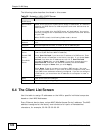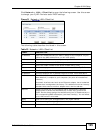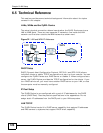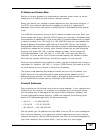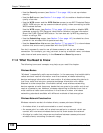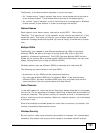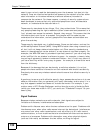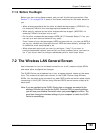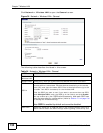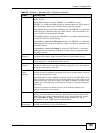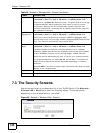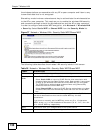
Chapter 7 Wireless LAN
P-2612HNU-Fx User’s Guide
131
Traditionally, a wireless network operates in one of two ways.
• An “infrastructure” type of network has one or more access points and one or
more wireless clients. The wireless clients connect to the access points.
• An “ad-hoc” type of network is one in which there is no access point. Wireless
clients connect to one another in order to exchange information.
Network Names
Each network must have a name, referred to as the SSID - “Service Set
IDentifier”. The “service set” is the network, so the “service set identifier” is the
network’s name. This helps you identify your wireless network when wireless
networks’ coverage areas overlap and you have a variety of networks to choose
from.
Multiple SSIDs
Traditionally, you needed to use different access points (APs) to configure
different SSIDs. As well as the cost of buying extra APs, there is also the
possibility of channel interference. The ZyXEL Device’s Multiple SSID function
allows you to use one AP to provide several SSIDs simultaneously. You can then
assign varying levels of privilege to different SSIDs.
Wireless stations can use different SSIDs to associate with the same AP.
The following are some notes on multiple SSIDs.
• A maximum of four SSIDs can be used simultaneously.
• You must use different WEP keys for different BSSs. If two stations have
different SSIDs, but have the same WEP keys, they may hear each other’s
communications (but not communicate with each other).
Radio Channels
In the radio spectrum, there are certain frequency bands allocated for unlicensed,
civilian use. For the purposes of wireless networking, these bands are divided into
numerous channels. This allows a variety of networks to exist in the same place
without interfering with one another. When you create a network, you must select
a channel to use.
Since the available unlicensed spectrum varies from one country to another, the
number of available channels also varies.
Wireless Security
By their nature, radio communications are simple to intercept. For wireless data
networks, this means that anyone within range of a wireless network without




